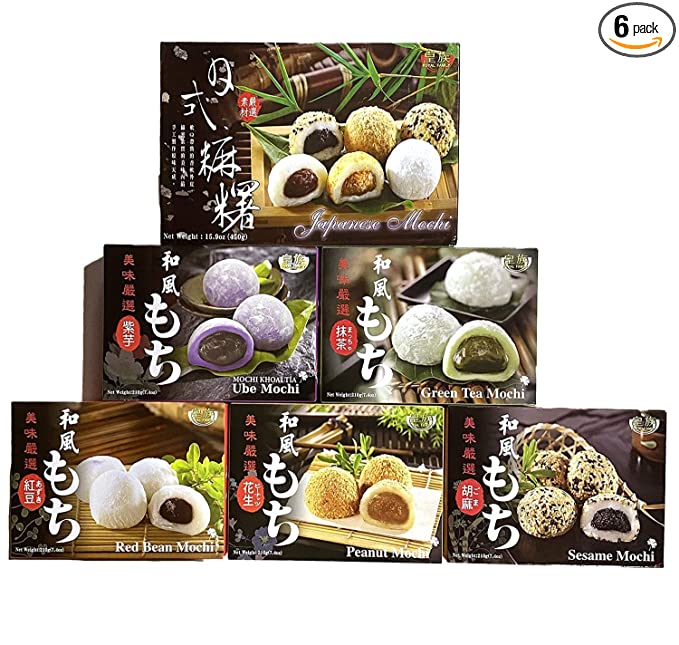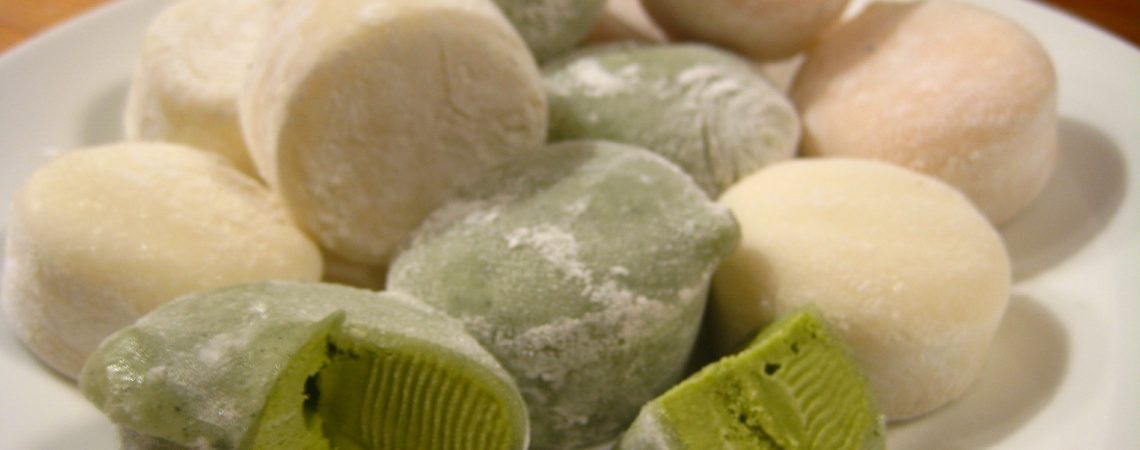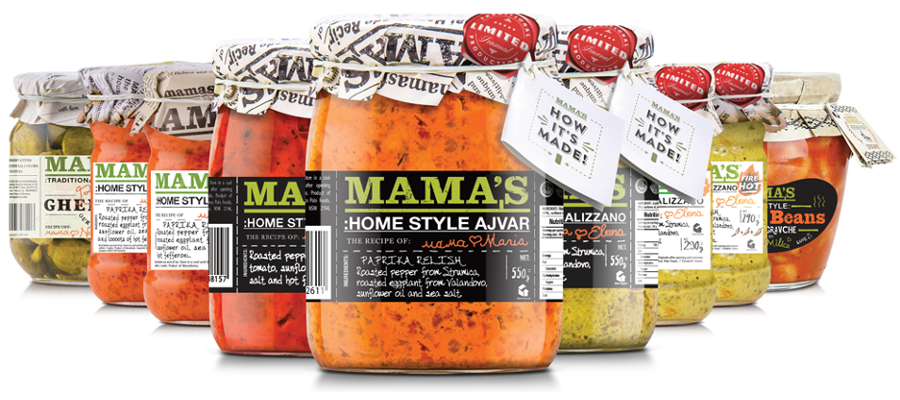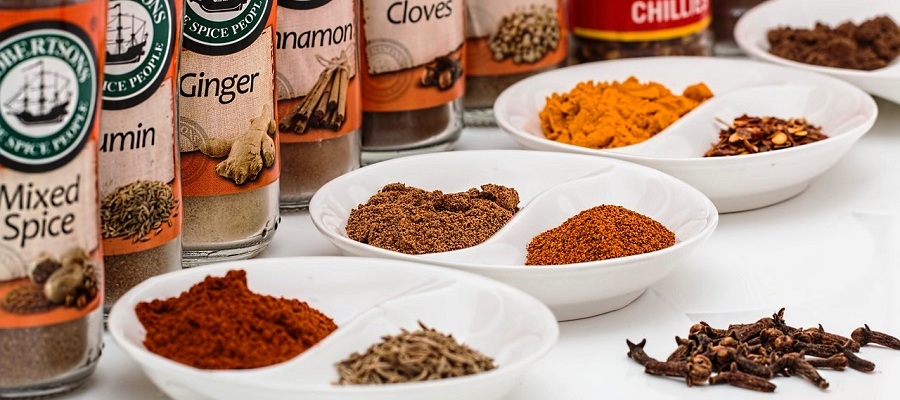Mochi is a Japanese rice cake or a snack, traditionally consumed on New Year's Eve. In Japan, the average consumption in one year is about one kilogram per person. Mochi has a soft but bite-resistant consistency. these Japanese rice cakes snacks are sweet, but can also be hearty. Mochi is filled with different things. The Japanese snacks are sweetened with soya sauce, and in western countries, mochi is even filled with a chocolate filling. You can eat mochi with dips, or in dried form. In the dried form, they are also more durable, but rather hard. To counteract this, mochi is dipped in tea or served as an accompaniment to Zoni, a special New Year's soup.
Production of mochi
The small Rice cakes are made from gluten. According to tradition, these Japanese rice cake is first steamed. Afterward, the reism is beaten in large wooden tunes with wooden hammers. This can be really exhausting, as the rice lump has to be flipped after each stroke. This method of preparation is very time-intensive and is therefore now only prepared at popular festivals or at public demonstrations of sumo wrestlers. Mass production is now taking care of by machines. Instead of sticky rice, there are also other kinds of Japanese rice cake mochi, which are made with rice flour.
Be careful when eating mochi
At the end of 2013, two people died while eating a Japanese rice cake called mochi. On new year's eve 2014 and 2015, nine people died eating these Japanese snacks. Why? Because these Japanese rice cakes are so sticky and contentable, that one can stifle. As the New Year's tradition recommends the mass of the Japanese rice cake consumption, particularly the elderly are affected who have difficulty swallowing the sticky Japanese rice cakes. In Japan, the authorities warned that Mochi should be divided into small pieces before they are given to children or the elderly. They should never be eaten alone. If a rice cake is stuck in the throat, a strong blow on the back is necessary to remove the plug. In extreme cases, it is also advised to use a vacuum cleaner. We hope we have not ruined your appetite. If you stick to our tips, nothing can happen to you while eating these delicious Japanese rice cake
Since when does Mochi exist?

Mochi from the food index
Mochi has a long history and has been consumed in East Asia for centuries. The exact origins of mochi are believed to date back to ancient times in China, where a similar type of pounded rice was made. Mochi then spread to Japan, where it became an integral part of Japanese cuisine and culture.
In Japan, the production and consumption of mochi can be traced back to at least the Nara period (710-794), where it was used as an offering in religious ceremonies and festivals. Over time, mochi became a staple food and gained popularity as a traditional sweet treat.
The traditional method of making mochi involves pounding glutinous rice, known as mochigome, into a sticky and chewy paste. This process requires a considerable amount of effort and skill, traditionally done using a wooden mallet and a large mortar called an "usu." Today, modern techniques and equipment are also used for mochi production.
Mochi is particularly associated with the Japanese New Year celebration, where it is eaten in various forms, such as in ozoni (a New Year soup) and as a sweet dessert. It is also enjoyed throughout the year on various occasions, festivals, and as a popular snack.
While mochi is most closely associated with Japan, similar rice-based desserts exist in other East Asian countries, such as China, Korea, and Taiwan, although they may have different names and variations.
How expensive is Mochi?
The price of mochi can vary depending on various factors such as brand, quality, size, and location. Generally, mochi is considered an affordable treat, but the specific cost can differ based on where you purchase it and the type of mochi you're interested in.
In Japan, where mochi is a traditional dessert, you can find a wide range of prices depending on the store or shop. Basic, mass-produced mochi can be relatively inexpensive, with prices ranging from a few hundred yen for a package. On the other hand, premium or artisanal mochi made with high-quality ingredients may be more expensive, costing several hundred yen per piece or even more.
In other countries, the price of mochi can vary depending on availability, importation costs, and local demand. It is not uncommon to find mochi at specialty Asian grocery stores or dessert shops. The price may vary depending on the specific brand, flavors, and packaging. Generally, commercially produced mochi tends to be more affordable compared to handmade or gourmet variations.
It's worth noting that prices are subject to change over time, and the availability of mochi can vary depending on your location. To get accurate and up-to-date pricing information, it's best to check with local retailers or online stores that offer mochi in your area.
How much Mochi can I eat daily?
The amount of mochi you can eat daily depends on various factors such as your overall diet, health condition, and personal preferences. Mochi is a Japanese rice cake made from glutinous rice, and it is often consumed as a dessert or snack.
While mochi can be a delicious treat, it is important to keep moderation in mind due to its high caloric content and potential impact on blood sugar levels. Mochi is typically dense in calories and carbohydrates, and it is often filled with sweet ingredients like red bean paste or sweetened fruit. If you are watching your calorie intake or have specific dietary restrictions, it's essential to be mindful of your mochi consumption.
As a general guideline, it is recommended to enjoy mochi in moderation and as part of a balanced diet. One or two pieces of mochi per day can be a reasonable portion, depending on the size of the mochi and your overall dietary needs. It's always a good idea to listen to your body and consult with a healthcare professional or nutritionist for personalized advice based on your specific circumstances.
How many calories are in mochi?
The number of calories in mochi can vary depending on its size, filling, and preparation method. Generally, a traditional mochi piece without any fillings or toppings has around 35 to 40 calories per piece (approximately 20 grams). However, when mochi is filled with sweetened ingredients like red bean paste or coated with sugar or other toppings, the calorie content can increase significantly.
It's important to note that the calorie content can vary among different brands and homemade recipes, so it's a good idea to check the specific nutrition information or packaging of the mochi you have or plan to consume for more accurate details.
What's the difference between fresh mochi and frozen mochi?
The main difference between fresh mochi and frozen mochi lies in their texture and shelf life.
Fresh Mochi: Fresh mochi is made from glutinous rice that has been cooked and pounded into a sticky and chewy texture. It is usually soft and has a slightly elastic consistency. Fresh mochi is commonly found in Japanese confectioneries or made at home during special occasions like New Year's celebrations. It is typically consumed within a few days of preparation and is highly perishable. Fresh mochi is often filled with various sweet ingredients like red bean paste, strawberries, or ice cream.
Frozen Mochi: Frozen mochi, on the other hand, is a commercially packaged product that has been pre-cooked and frozen to extend its shelf life. It is usually sold in supermarkets or specialty stores and can be found in the frozen food section. Frozen mochi typically comes in a variety of flavors and fillings. The texture of frozen mochi is slightly firmer than fresh mochi due to the freezing process, but it becomes soft and chewy when thawed.
The advantage of frozen mochi is its longer shelf life compared to fresh mochi. It can be stored in the freezer for several months, allowing you to enjoy mochi whenever you want without worrying about it spoiling quickly. Frozen mochi is often individually wrapped, making it convenient to portion and serve.
Both fresh and frozen mochi offer a delightful and unique eating experience. The choice between the two depends on personal preference, availability, and whether you prefer the softer texture of fresh mochi or the convenience of having a longer-lasting supply with frozen mochi.


